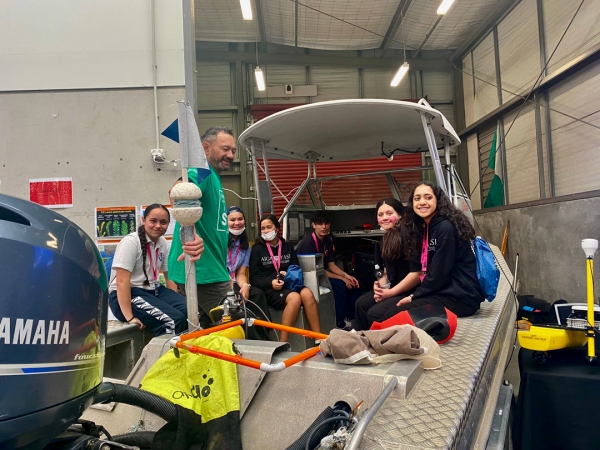More than 300 secondary school students enjoyed a brief stint as freshwater researchers to help rid the country of invasive freshwater aquatic species.
The Year 9-10 students took part in the Science Spinners Creative Lab event run by The Kudos Science Trust at the Claudelands Events Centre in Hamilton, July 5-6.
The trust set up Science Spinners as a hands-on interactive event to inspire young people from lower decile schools in the Waikato and Bay of Plenty to think about a career in science.
There were four science hubs and each one had three stations run by presenters from Wintec/Te Pukenga, University of Waikato, ESR, University of Auckland, Manaaki Manawa, NIWA, Farm Medix and LIC.
Students were divided into groups which spent 15 minutes performing a science activity at each hub.
Aquatic Biology Technician Aleki Taumoepeau, Hamilton, developed the NIWA science hub based on his experience using tools to identify invasive freshwater aquatic species; these are based around the LakeSPI methodology developed by NIWA’s Aquatic Plants Group in Hamilton.
He was assisted by Tekiteora Rolleston-Gabel, an environmental researcher with NIWA’s National Centre for Māori Environmental Research, Te Kūwaha.
Students were presented with pictures of an assortment of aquatic plants and animals, and, making use of reference materials, the young researchers were challenged to identify whether the animals and plants were native or an introduced pest.
Some endemic plants were intentionally chosen because they look similar to exotic species, which caught out a few students. Other students were surprised to learn of the damage koi carp, catfish and red eared slider turtles can inflict on our freshwater environments.
The NIWA hub stood out from the rest at this year’s Science Spinners.
It included a 5-metre diving vessel which proved to be a big drawcard with the students who were keen to learn more about the boat. They also wanted to get “hands-on” with the diving kit, other dive tools and research instruments that Aleki had assembled.
A large tv screen displayed a video loop showing big lake Wanaka tuna/eels; underwater divers working, and the newly developed autonomous Hydrone in action surveying lake Rototoa for invasive aquatic weeds. The 1.3m remote catamaran boat was also part of the equipment on display.
The hub included a stunning aquarium containing native plants and fish species such as īnanga, tuna, kakahi, Giant kōkopu and bullies was also popular among the young visitors.
Useful links:


